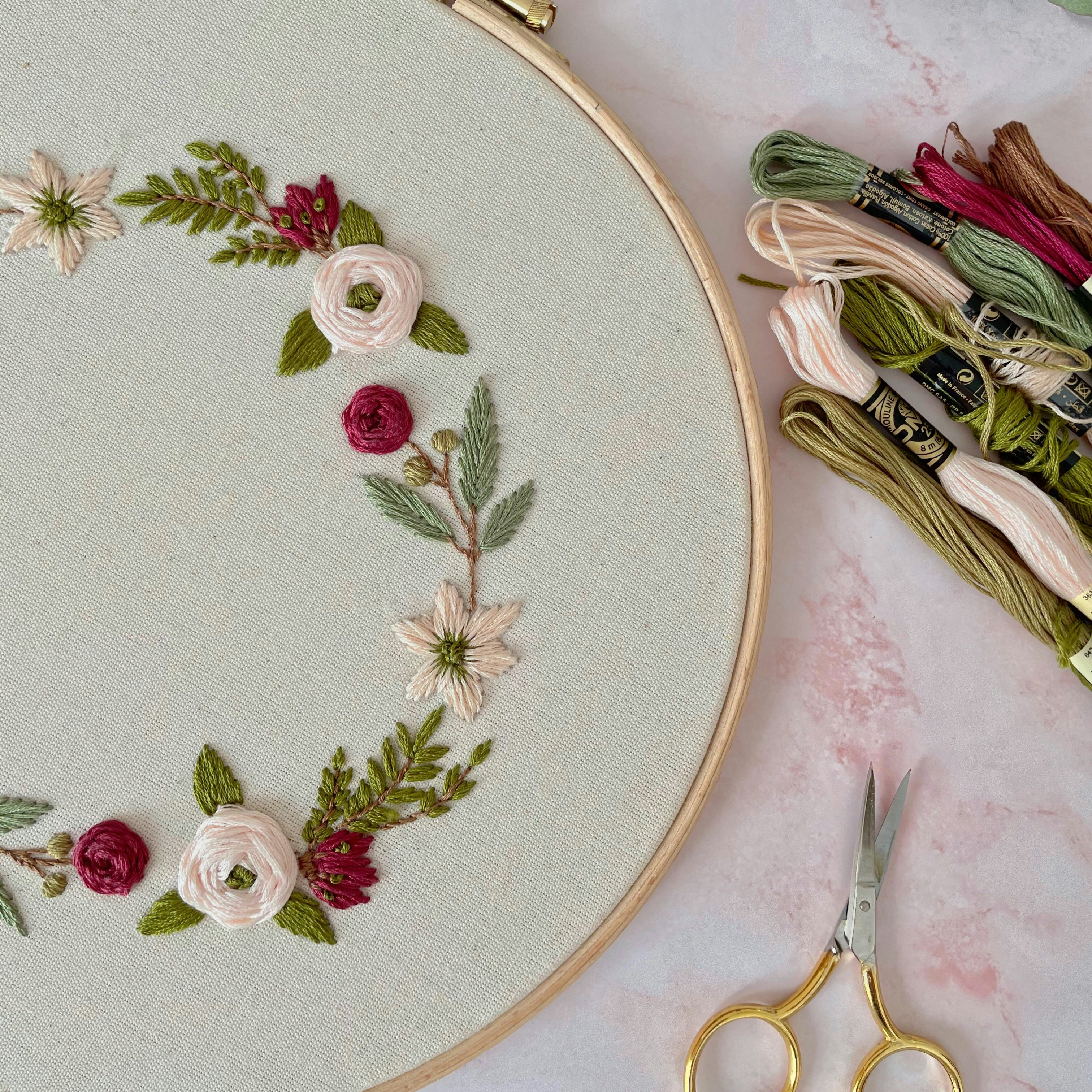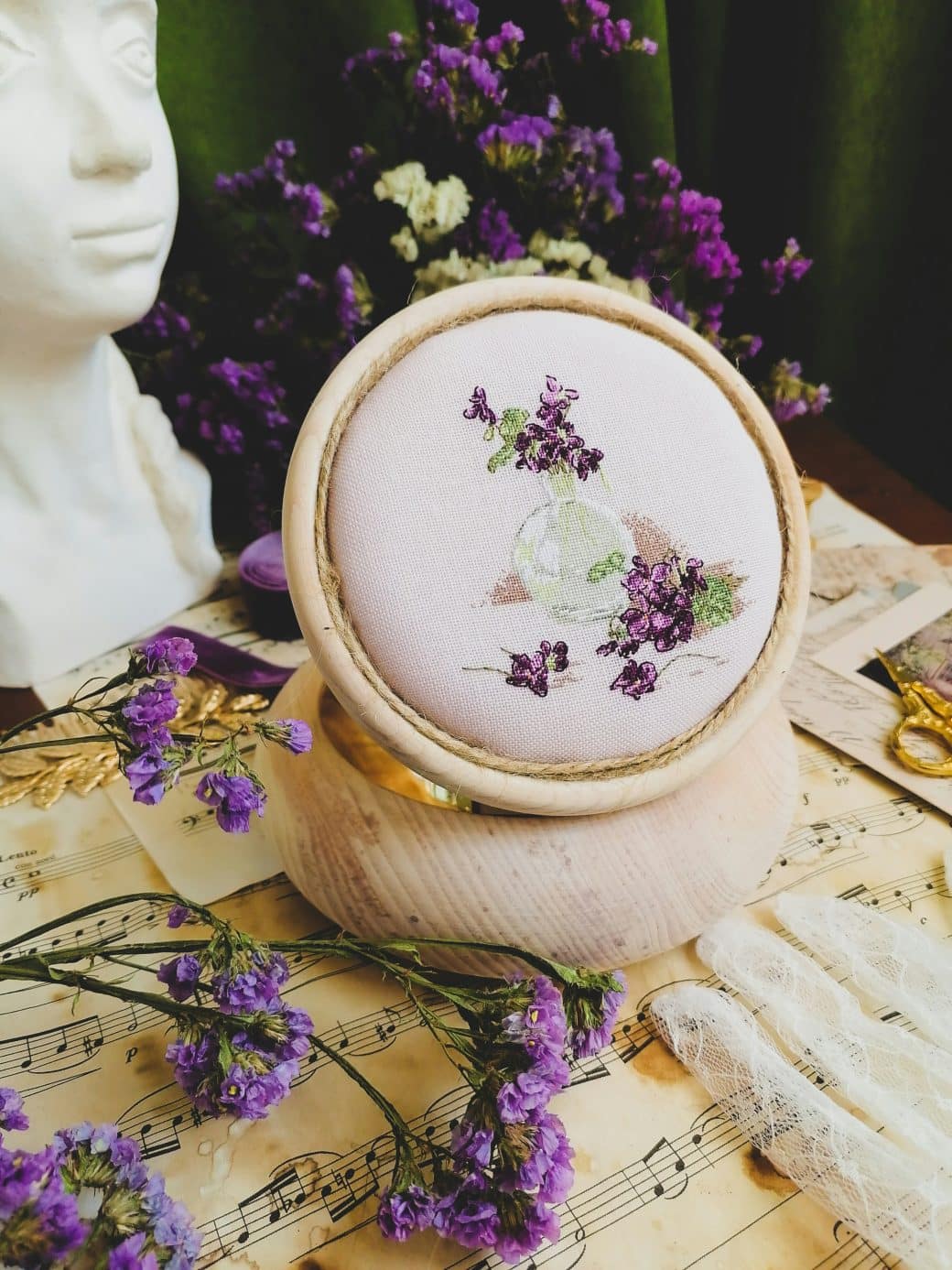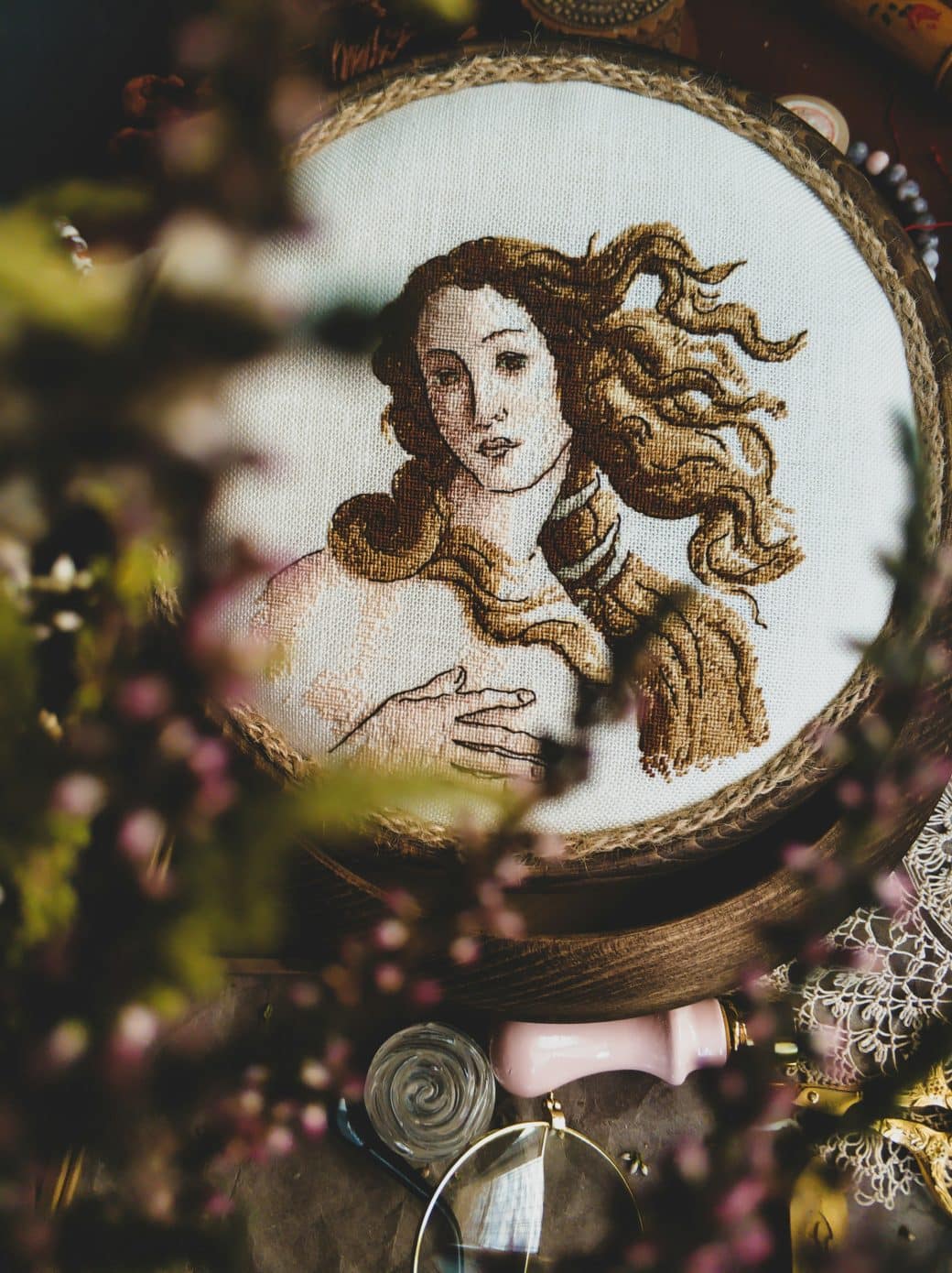Embarking on the journey through the world of embroidery, I’ve discovered just how pivotal mastering the use of hoops and frames truly is. “Mastering Hoops and Frames: A Comprehensive Guide for Embroidery Enthusiasts” serves as your personal guidebook, aiming to elevate your stitching game to new heights. From selecting the perfect hoop to understanding the nuances of frame tension, this guide walks you through each step with clarity and insight. Whether you’re a seasoned stitcher or threading your needle for the first time, you’ll find invaluable tips and tricks to bring your embroidery projects to life with precision and beauty.

Understanding the Basics of Hoops and Frames
The purpose of embroidery hoops and frames
Embroidery hoops and frames are essential to my embroidery toolkit; they’re like the unsung heroes that lay the foundation for a perfect piece. Their main role is to stretch the fabric tightly so that it remains smooth and wrinkle-free as I stitch, preventing any puckering that can ruin the design’s aesthetic. This tension is crucial for achieving even stitches and a professional-looking finish.
Types of embroidery hoops and frames
There’s a world of options out there when it comes to the types of hoops and frames. The most common are the round hoops that split into two hoops, where one fits inside the other to clamp the fabric in between. Then, there are the square or rectangular embroidery frames, which are especially handy for larger projects. Some specialized frames are designed for particular tasks, like quilting frames that can accommodate the layers of a quilt.
Materials used for making hoops and frames
Typically, hoops and frames are made from wood, plastic, or metal. I’ve found that wooden hoops offer a classic feel and can be quite durable if taken care of properly. Plastic hoops usually provide a lightweight option and often come in various colors, which can be fun to match with projects. Metal hoops, rare but not unheard of, offer a sturdy option but can be a bit tough on the hands during prolonged use.
Choosing the Right Hoop or Frame for Your Project
Factors to consider when choosing a hoop or frame
Selecting the right embroidery hoop or frame isn’t just a matter of size. I consider the project’s size, the type of fabric, and the duration for which the fabric needs to be stretched. The hoop or frame’s material also plays a role in my selection process, as it can affect the grip on the fabric and the overall handling comfort.
Differences between small and large hoops
Small hoops are perfect for projects that are compact or those that require a lot of hand movement, offering greater control and maneuverability. On the flip side, large hoops or frames suit bigger projects, providing ample space for the design to unfold. However, they can be more challenging to handle and may require a stand for support during lengthy embroidery sessions.
The ideal hoop or frame for different types of embroidery
The project’s nature dictates the ideal hoop or frame. For instance, delicate fabrics and intricate designs benefit from a smaller hoop that offers better tension control. Meanwhile, larger frames are the go-to for extensive projects like tapestries or tablecloths, where consistent tension across a wide area is essential.

Setting Up Your Hoop or Frame
Step by step process of setting up an embroidery hoop
To start, I loosen the screw at the top of the outer hoop and remove the inner hoop. Then, I lay the fabric over the inner hoop, ensuring it’s wrinkle-free and slightly larger than the hoop size. Placing the outer hoop over the fabric and inner hoop, I press down firmly until the fabric is sandwiched snugly in between. Finally, I tighten the screw and pull the fabric’s edges to ensure it’s taut and evenly stretched.
Tips for tightening your hoop or frame
Achieving the right tension is key. After tightening the screw, I go around the edges, gently pulling the fabric to make sure it’s evenly taut. For extra grip, I sometimes wrap the inner hoop with twill tape or bias binding. This not only provides friction but also protects delicate fabrics from marks or damage.
Troubleshooting common setup issues
Fabric slipping out of the hoop is a common issue. If that happens, I check if I’ve wrapped the inner hoop for added grip or if the fabric is large enough to stay securely in the hoop. Sometimes, simply repositioning the fabric and tightening the screw a tad more does the trick.
Effective Hoop and Frame Maintenance
Regular cleaning tips
Dust and dirt can accumulate on the hoops and frames over time, affecting their performance. I make it a point to wipe them down with a dry cloth after every use. For wooden frames, a mild wood cleaner does wonders, ensuring they don’t dry out or crack.
Recommended maintenance products
Beeswax can be used on wooden hoops to keep them smooth and prevent splinters. For metal parts, a small dab of machine oil ensures that screws turn smoothly without rusting. It’s best to use these products sparingly, as a little goes a long way.
Long-term storage suggestions
I store my hoops and frames in a dry, cool place away from direct sunlight, which can warp or bleach the materials over time. Separating and wrapping them in soft cloth ensures they don’t scratch or damage each other.

The Role of Hoops and Frames in Stitch Quality
How a hoop or frame affects stitch tension
Tight and even fabric tension is crucial. It ensures that each stitch is uniform, preventing loose or overly tightened stitches that can distort the design. A well-set hoop or frame greatly aids in maintaining this balance.
Steering clear of creasing and fabric warping
To avoid creases and warping, I make sure not to leave the fabric in the hoop or frame for longer than necessary, especially if it’s a project I’ll be working on over several days. I also use hoops that are just the right size for the project area, minimizing the risk of stretching or deforming the fabric.
Coping with thick fabrics
Thick fabrics pose their own set of challenges. In such cases, a hoop with a deeper edge or a frame that allows adjustments for thickness can be invaluable. Sometimes, using a stabilizer behind the fabric can also help maintain tension without straining the material.
Decorative Hoops and Frames
Using hoops and frames as part of the finished piece
Embroidery hoops, especially, lend themselves beautifully as frames for displaying the finished work. A neat trick I’ve learned is to trim the fabric, glue it to the back of the hoop, and add a backing for a clean, professional look.
Decorating your own hoops and frames
Personalizing hoops and frames is a creative way to add flair to a project. Painting, staining, or wrapping hoops with fabric, ribbons, or even embroidery thread can turn them into unique pieces that reflect the project’s theme or my personal style.
Online marketplaces and stores for purchasing decorative hoops and frames
There are countless options online for buying intricately designed hoops and frames. Whether it’s hand-painted wooden hoops or vintage-style frames, these marketplaces offer a wide variety to choose from, elevating the presentation of my embroidery to new heights.

Advanced Techniques For Hoops and Frames
Working with hoopless embroidery
Hoopless embroidery can be freeing and is suited for projects where a hoop might create unnecessary tension or distort delicate fabrics. Using stabilizers and fabric basting can help manage the fabric’s tension effectively, even without a hoop.
Using frames for complex embroidery pieces
For large or complex pieces, frames that can be consistently adjusted for tension are invaluable. They allow the fabric to stay stretched and in place, making it easier to manage intricate details without having to reposition the work constantly.
Exploring unique embroidery styles using special frames
Specialty frames, like scroll frames or tambour frames, offer unique opportunities to experiment with different embroidery methods, such as chain stitch embroidery or sashiko, that might be cumbersome with traditional hoops.
Hoops and Frames Safety Precautions
Proper handling of hoops and frames
Handling hoops and frames with care is important to avoid injury. I always ensure my hands are dry to prevent slipping, and I’m cautious not to apply too much pressure when tightening screws, as they can break or cause strain.
Safe storage to avoid accidents
Storing hoops and frames properly is crucial to prevent accidents, especially if I have small children or pets around. I keep them in a designated craft cabinet or shelf, away from the edge, to ensure they don’t fall or become playthings.
What to do in case of broken or damaged pieces
In case of breakage or damage, I assess whether the hoop or frame can be safely repaired. If it’s a wooden hoop, sometimes a bit of sanding or gluing can fix minor issues. However, for severe damages, especially to metal parts, it’s safest to replace the piece altogether.
Reviews and Recommendations
Top rated embroidery hoops and frames in the market
Based on my experience, brands that offer hoops and frames made from durable materials and with smooth finishes usually receive the highest ratings. I’m particularly fond of bamboo hoops for their lightweight feel and ease of handling, as well as adjustable wooden frames for their versatility.
Popular brands for embroidery enthusiasts
Some brands have become staples in the embroidery community for their quality and range of options. These include DMC, Clover, and Elbesee, all of which offer products that cater to beginners and advanced embroiders alike.
Where to buy quality hoops and frames
Quality hoops and frames can be purchased from craft stores, online marketplaces like Etsy, or directly from manufacturers’ websites. It’s worth comparing prices and reading reviews to ensure I’m getting the best deal for my needs.
Frequently Asked Questions
Solving common issues with hoops and frames
The most common issues include fabric slipping and uneven tension. These can often be solved by ensuring the fabric is cut larger than the hoop, adjusting the screw for a tighter fit, and occasionally re-tightening the fabric as I work.
Advice for beginners using embroidery hoops
For beginners, I recommend starting with a medium-sized, easy-to-handle hoop and practicing with different types of fabric to get a feel for how much tension is needed. It’s also helpful to watch tutorials or join workshops to learn best practices.
Advanced queries from seasoned embroidery artists
More experienced artists often explore questions about adapting hoops and frames for unconventional materials or techniques. Experimenting with multiple hoops, using weighted frames, or even custom-building frames can open up new possibilities in their craft.
Mastering hoops and frames is a journey that enhances the embroidery experience, letting creativity flourish within the bounds of taut fabric. Whether you’re a beginner or an advanced embroiderer, understanding and utilizing these tools effectively can elevate your work from good to exceptional.



